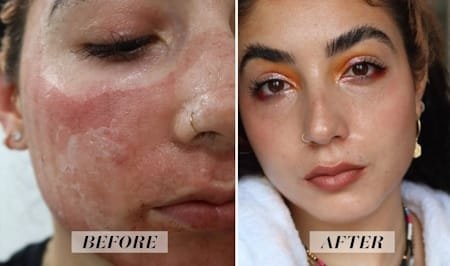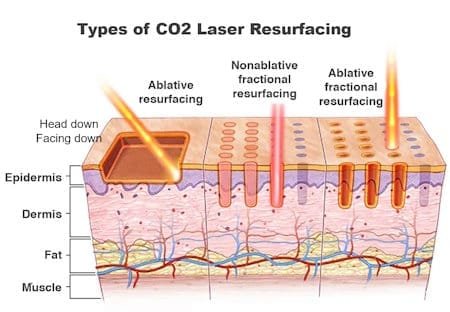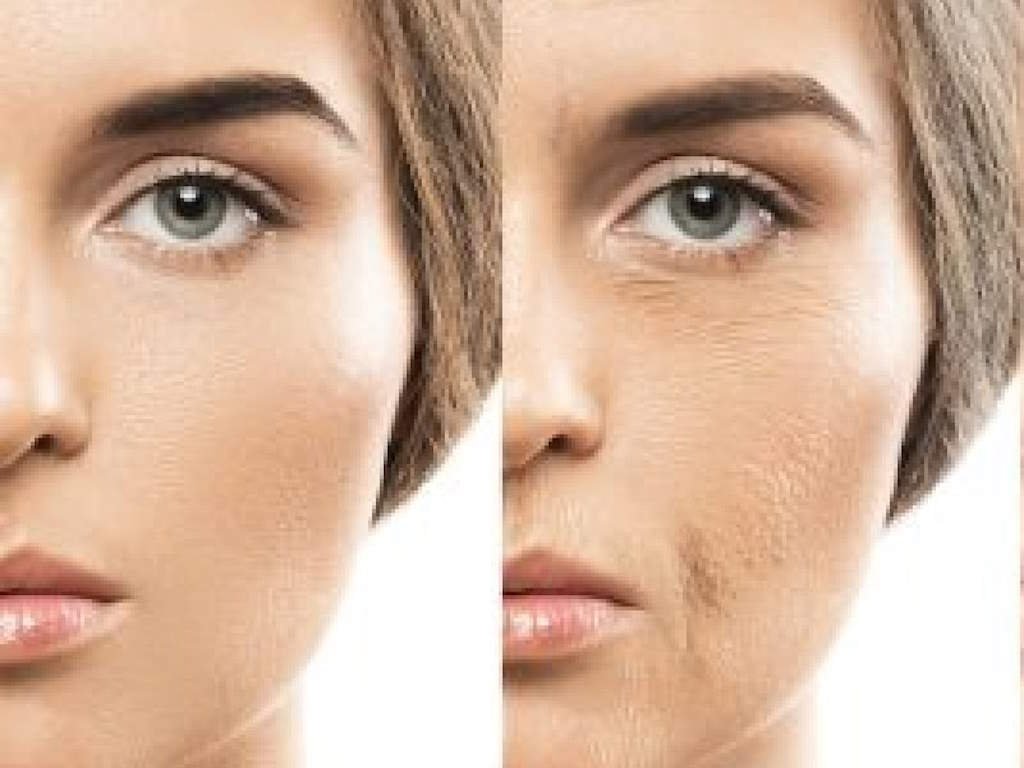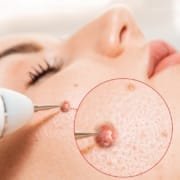Carbon Dioxide (CO2) Laser Resurfacing Treatment: Benefits, Side effects and Recovery
Carbon dioxide (CO2) laser treatment is a popular and effective method to improve the appearance of skin that has been damaged by the sun (photo-aging) or to treat mild scars. It can also remove certain skin lesions. This guide will explain when CO2 laser treatment is used, how it works, what you can expect during and after the procedure, and the role of the healthcare team in your treatment.
What is CO2 Laser Treatment?
CO2 lasers have been used since the 1960s. Initially, they were used mainly for surgical procedures. Over the years, the technology has improved, allowing for more precise and less invasive treatments. Modern CO2 lasers can treat the skin’s surface more gently, making them suitable for cosmetic treatments like skin resurfacing.
How Does CO2 Laser Treatment Work?
CO2 lasers use a specific wavelength of light that is absorbed by the water in your skin cells. This absorption heats and vaporizes the top layers of the skin, promoting new skin growth and collagen production. The new skin that forms is usually smoother and younger-looking.
Types of CO2 Laser Treatments
There are two types of CO2 lasers used in skin treatments: fully ablative and fractional. Here’s a brief explanation of each:

1. Fully Ablative CO2 Lasers
Fully ablative CO2 lasers remove the entire top layer of skin in the treatment area and heat the deeper skin layers to stimulate new collagen and elastin production. This treatment is intense and usually requires general anesthesia, with a recovery time of at least two weeks. It is best suited for fair or light skin tones due to the risk of pigmentation issues. Doctors often recommend preparing the skin with Retin-A or hydroquinone before the procedure. Typically, only one treatment is needed to achieve the desired results.
2. Fractional CO2 Lasers
Fractional CO2 lasers target only a fraction of the skin, leaving some areas untreated. This allows doctors to adjust the treatment depth and the percentage of skin treated. Fractional CO2 treatments are less aggressive than fully ablative lasers and are better for surface-level improvements, although they can also stimulate deeper skin remodeling. The recovery time is shorter, often just a few days, but multiple treatments are usually needed for the best results. This newer technology is popular due to its reduced pain, downtime, and risks.

Who Can Benefit from CO2 Laser Treatment?
CO2 laser treatment is ideal for:
- People with sun-damaged skin (photo-aging)
- Individuals with mild to moderate acne scars
- Those looking to improve skin texture and tone
- People with certain precancerous skin lesions
When is CO2 Laser Treatment Not Recommended?
CO2 laser treatment may not be suitable for everyone. It’s important to discuss your medical history with your doctor. The treatment might not be recommended if you have:
- Active acne
- Open wounds or infections
- A history of keloid scars
- Recently used isotretinoin (a medication for severe acne)
- Certain autoimmune diseases
Preparing for CO2 Laser Treatment
Before your treatment, your doctor will perform a thorough examination and discuss your medical history. You may be advised to:
- Avoid sun exposure and use sunscreen
- Stop smoking several weeks before the procedure
- Use certain skincare products to prepare your skin
If you are having the procedure near your mouth, your doctor might prescribe antiviral medication to prevent cold sores.
What to Expect During CO2 Laser Treatment
The treatment can be done in a doctor’s office. Depending on the size of the area being treated, you might receive a local anesthetic or sedation to keep you comfortable. The procedure typically takes 30 minutes to two hours.
During the Procedure
- Anesthesia: Depending on the extent of the treatment area, you may receive local anesthesia, sedation, or even general anesthesia. Local anesthesia numbs the specific area being treated, while sedation helps you relax. General anesthesia might be used for more extensive procedures.
- Eye Protection: Your eyes will be protected during the procedure to prevent any accidental exposure to the laser. This could be done with wet gauze or specially designed protective eyewear.
- Laser Application: The doctor will use the CO2 laser to target the treatment area. The laser’s energy is absorbed by the water in your skin cells, causing the top layers of the skin to vaporize and stimulate the production of new collagen. The doctor will move the laser across your skin, ensuring even coverage.
After CO2 Laser Treatment
Your skin will be red and swollen immediately after the treatment, similar to a sunburn. It’s important to follow your doctor’s aftercare instructions to promote healing and reduce the risk of complications. You may need to:
- Keep your skin clean and moisturized
- Avoid sun exposure and use sunscreen
- Use prescribed medications to prevent infection and reduce inflammation
Post-Treatment Care
Proper post-treatment care is crucial for achieving the best results and minimizing complications. Here are some tips for caring for your skin after CO2 laser treatment:
- Moisturize: Keep your skin well-moisturized with a gentle, non-irritating product. This helps prevent dryness and promotes healing.
- Sun Protection: Protect your skin from the sun by wearing a broad-spectrum sunscreen with SPF 30 or higher. Avoid direct sun exposure and wear protective clothing, such as hats and long sleeves.
- Avoid Picking: Do not pick at scabs or peeling skin, as this can lead to scarring and infection.
- Gentle Cleansing: Cleanse your skin gently with a mild cleanser and lukewarm water. Avoid using harsh scrubs or exfoliants.
- Medications: Take any prescribed medications, such as antibiotics or antiviral drugs, as directed by your doctor. These medications can help prevent infection and promote healing.
Potential Complications of CO2 Laser
While CO2 laser treatment is generally safe, there are potential risks and side effects, including:
Short-Term Complications
- Redness and Swelling: It’s normal to experience redness and swelling for several days to weeks after the procedure. This is a sign that your skin is healing.
- Crusting and Peeling: As your skin heals, you may notice crusting and peeling. This is a normal part of the healing process and should resolve within a few weeks.
Long-Term Complications
- Changes in Skin Color: Some patients may experience changes in skin color, such as hyperpigmentation (darkening of the skin) or hypopigmentation (lightening of the skin). These changes are usually temporary but can sometimes be permanent.
- Scarring: Although rare, scarring can occur, especially if the treated area becomes infected or if you pick at scabs or peeling skin.
Your doctor will discuss these risks with you before the procedure and how to manage them if they occur.
The Role of the Healthcare Team
A successful CO2 laser treatment involves a team of healthcare professionals working together. This team may include:
- Dermatologists
- Plastic surgeons
- Nurses
- Physician assistants
Each member of the team plays a vital role in ensuring you receive the best care before, during, and after your treatment.
Improving Your Treatment Outcomes
To get the best results from your CO2 laser treatment, follow these tips:
- Choose a Qualified Provider: Ensure your treatment is performed by a qualified and experienced provider, such as a board-certified dermatologist or plastic surgeon.
- Follow Pre- and Post-Treatment Instructions: Adhere to all pre- and post-treatment instructions provided by your doctor to minimize complications and promote healing.
- Attend Follow-Up Appointments: Attend all scheduled follow-up appointments to monitor your progress and address any concerns or complications.
- Maintain a Healthy Skincare Routine: After your skin has healed, maintain a healthy skincare routine that includes gentle cleansing, moisturizing, and sun protection.
Conclusion
CO2 laser treatment is a powerful tool for improving the appearance of your skin. By understanding the process, preparing properly, and working with your healthcare team, you can achieve the best possible outcomes. Always consult with your doctor to determine if CO2 laser treatment is right for you and to get personalized advice for your skincare needs. Whether you’re looking to reduce the signs of aging, improve the texture of your skin, or treat specific skin conditions, CO2 laser treatment can offer significant benefits when performed by a qualified professional.










